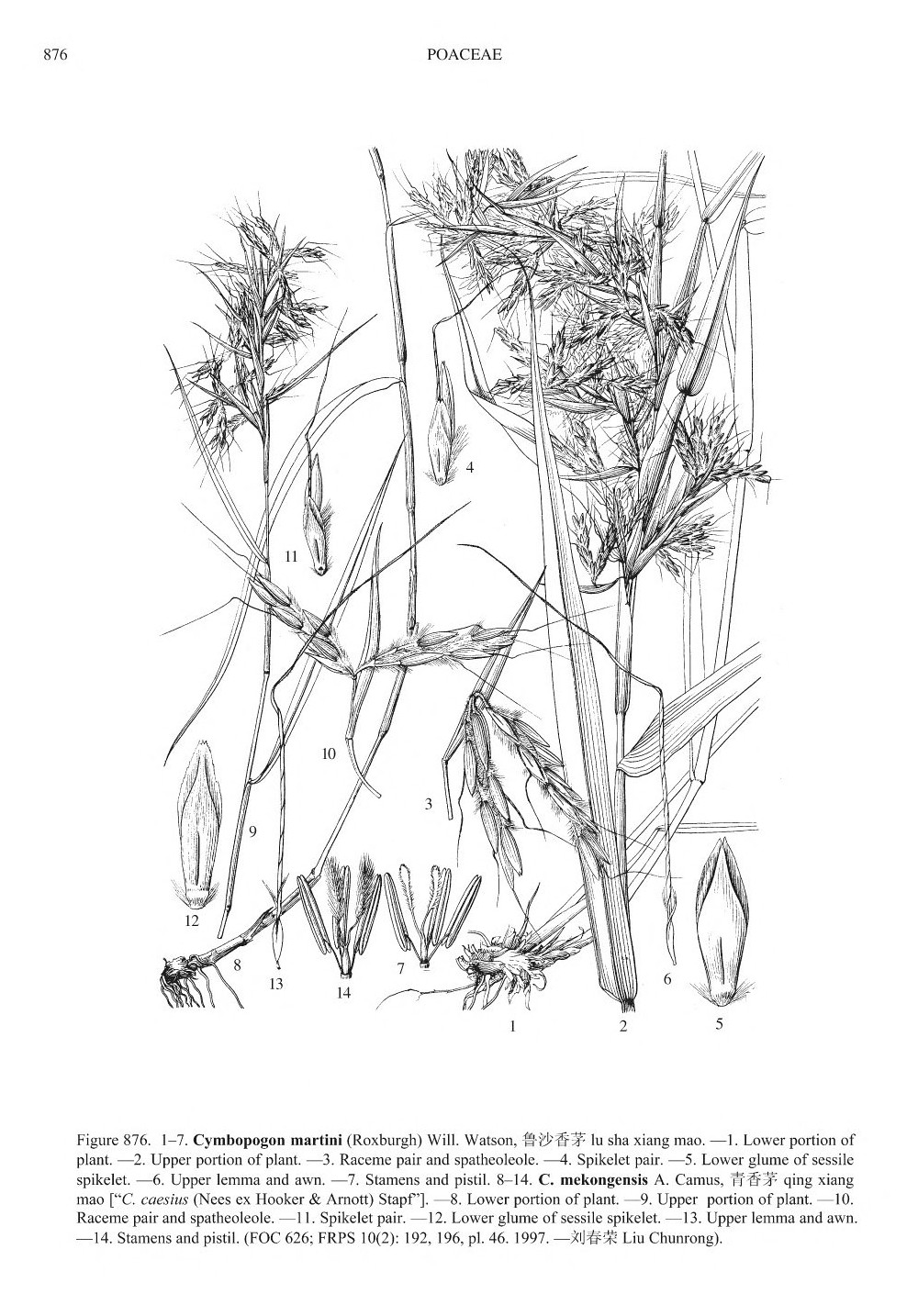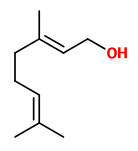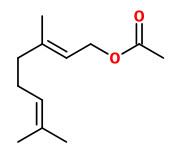Dies ist eine alte Version des Dokuments!
Cymbopogon martini (Roxb.) Wats. - syn.Andropogon martini Roxb. - Poaceae - palmarosa, Palmarosa
„This grass is native to India, but is cultivated elsewhere in the tropics for its oils. Two forms can be distinguished in the field, each with a different oil content, but the habit differences are not evident in herbarium material. The cultivar 'Motia' yields palmerosa oil and 'Sofia' yields ginger-grass oil.“ http://www.efloras.org/florataxon.aspx?flora_id=2&taxon_id=250071024
„Palmarosa oil, which has a scent similar to roses, is added to soaps and cosmetics.“
http://en.wikipedia.org/wiki/Cymbopogon_martinii
Qualitative sensory properties of the essential oil are: sweet floral, geraniol-(rose-)like with herbal, tea, rye bread and clary sage notes. Main components of oil from India, Brazil, Guatemala and Madagascar were geraniol (59-94%), geranyl acetate (5-20%), geranyl formate (0-15%), nerol (0-14%), and linalool (0-12%). Minor components were e.g. nerolidol, farensol, limonene, ocimene, terpinene, elemol and caryophyllene. Alkyl-substituted pyrazines and pyridines present in traces (total 100ppm) are responsible for the rye bread notes (Surburg 1988).
[Boelens, Mans H. „Sensory and chemical evaluation of tropical grass oils.“ Perfumer & flavorist 19.2 (1994): 29-45]
The primary essential oil (0.3-0.8%) consists mainly of geraniol (78.0-85.7%) and geranyl acetate (2.9-12.0%). Minor components were linalool (2.2-2.4%), (E,Z)-farnesol (0.8-1.9%), sabinene, myrcene, limonene, (Z)-β-ocimene, (E)-β-ocimene, citronellol, geranyl butyrate, geranyl isovalerate, and geranyl hexanoate.
[Chemical profiles of primary and secondary essential oils of palmarosa (Cymbopogon martinii (Roxb.) Wats var. motia Burk.), B.R. Rajeswara Rao, P.N. Kaul, K.V. Syamasundar, S. Ramesh, Industrial Crops and Products 21 (2005) 121-127] http://jonnsaromatherapy.com/pdf/GC-MS_Cymbopogon_martini_2004_01.pdf
Free alcohol content of Palmarosa oils (calculated as geraniol) is in the range of 72-94%. High-grade palmarosa oil may contain up to 95 % geraniol and its esters.
[Surburg, Horst, and Johannes Panten. „Common Fragrance and Flavor Materials“ (2006), 204]
„The essential oil extracted from palmarosa (Cymbopogon martinii) has proven anti-microbial properties against cells of Saccharomyces cerevisiae. Low concentrations of the oil (0.1%) inhibited the growth of S. cerevisiae cells completely. The composition of the sample of palmarosa oil was determined as 65% geraniol and 20% geranyl acetate as confirmed by GC-FTIR. The effect of palmarosa oil in causing K+ leakage from yeast cells was attributed mainly to geraniol. Some leakage of magnesium ions was also observed.“
[Antimicrobial action of palmarosa oil (Cymbopogon martinii) on Saccharomyces cerevisiae., Prashar, A., Hili, P., Veness, R.G., Evans, C.S., Phytochemistry, Vol.63(5), 2003, 569-575]
„Essential oils extracted from flower petals of palmarosa (Cymbopogon martini), evening primrose (Primula rosea), lavender (Lavandula angustifolia) and tuberose (Polianthus tuberosa) were tested for their antibacterial activities against gram-positive and gram-negative bacteria. Different concentrations of each essential oil ranging from 10-100% were tested. Both gram-positive and gram-negative bacteria were found susceptible to the studied flower essential oils. With increase in concentration of essential oil, increase in zone of inhibition was observed thus dose-dependent response was clear for each essential oil. Essential oil extracted from Cymbopogon martini showed the highest activity against both gram positive and gram negative bacteria among the tested essential oils.“
[Antibacterial activity of essential oils from palmarosa, evening primrose, lavender and tuberose., Lodhia, M.H., Bhatt, K.R., Thaker, V.S., Indian journal of pharmaceutical sciences, Vol.71(2), 2009, 134] http://www.ncbi.nlm.nih.gov/pmc/articles/PMC2839398/

Cymbopogon martinii (1-7), Flora of China Illustrations vol. 22, fig. 876
http://www.tropicos.org/Image/85182 CC BY-NC-SA 3.0



